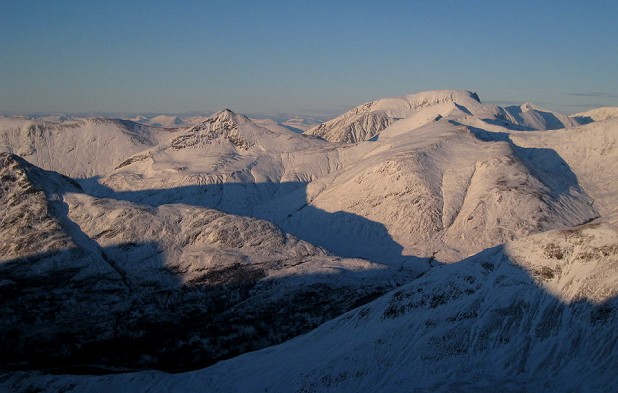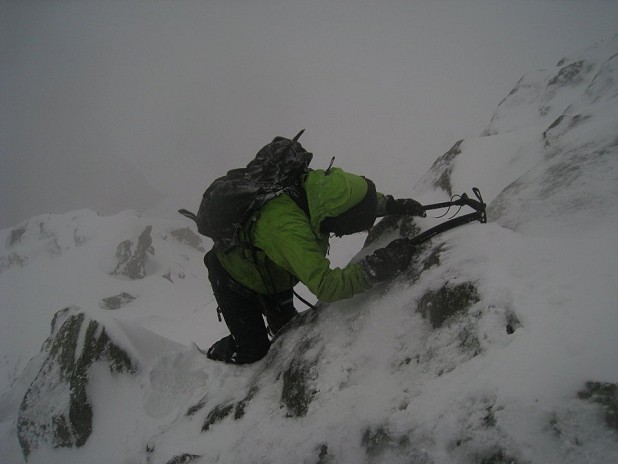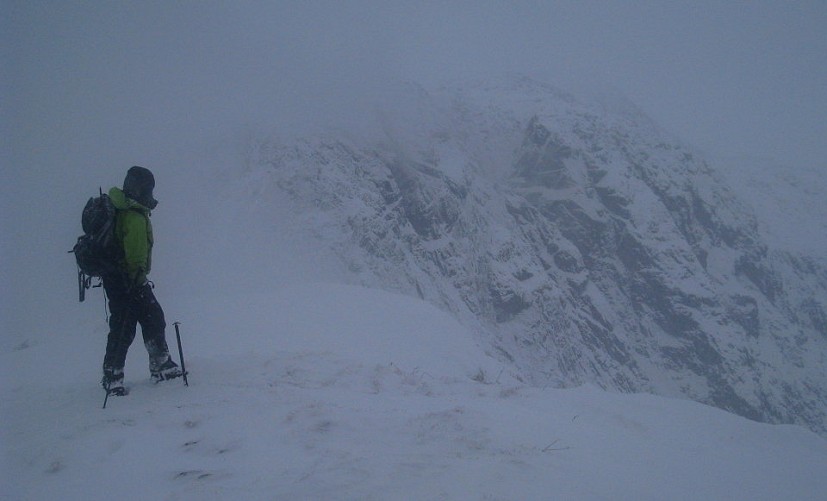Essentials for Beginners Part 1
Look out for the other articles in this series:
Winter Essentials for Beginners Part 2: Clothing and Equipment
Winter Essentials for Beginners Part 3: Skills and Dangers
Winter hillwalking places big demands on skills, fitness and equipment. There's a lot to learn, so get set for the snowy season with this three-part rundown of the basic essentials, from crampons and axes to skills courses and avalanche forecasts - the how tos, where tos and why tos... From books and websites to lectures and DVDs, there's a wealth of information available to help you on your way. Treat this series of articles as a first port of call.
All winter hillwalking is mountaineering, goes the oft-quoted aphorism, and it carries a lot of weight (as will you). If your previous experience has been confined to summer then be in no doubt that this is a much more serious and testing time of year. Go informed, and be prepared.
When snow hits the hills you have to be equipped and clothed for the worst, your navigation honed and your avalanche antennae set on edge. Since snow is tiring to walk in and there's more gear to cart about in winter, fitness and endurance are vital too. Tackle walker's ridges such as Striding Edge or the CMD Arête in winter conditions and you're into climbing territory (just). But gentler ground has its challenges as well. With added snow or ice even trivially easy summer terrain can become arduous – and sometimes even dangerous. Potential hazards range from cornices and avalanches to unforgiving hard-frozen neve and treacherous ice-glazed rocks. Here's another pithy truism - an ice axe, crampons and the ability to use them are often essential in winter. Sounds like mountaineering to me.
If you've never done it then you might wonder whether winter hillwalking is worth all the hard work and hassle. But once tried, I challenge you not to become a convert for life. What's not to love? Ranks of snow capped mountains jostling off to the horizon; sunshine gleaming on frosted rock; gnarly battles with wild weather; winter combines the epic with the aesthetic, stoic suffering with pure joy.
If you're new to all this then don't be intimidated. There are a lot of skills to learn - and kit to buy - but several well-travelled paths into safe winter walking are open to you. Consider booking a winter skills course, or pool resources with pals to hire an instructor for a few days. Perhaps you'd rather join a club to benefit from the wisdom (and gear) of other members. Or maybe a more experienced friend would be willing to show you the ropes (etc) on a less organised basis?
Jon Garside, BMC/MLTE Training Officer
Then there's the DIY approach favoured by generations of hillwalkers, just going out there and giving it a shot. Many skills such as navigation transfer naturally from a summer setting to winter, while other tips and bits of kit can be picked up along the way (perhaps via one of the methods listed above). With a little common sense it's possible to build up methodically from short easy walks to full-on adventures.
Conditions
First off, let's define our terms. Not all hillwalking in the winter months is 'winter hillwalking'. This is an activity predicated on the presence of snow and ice, and in our unreliable climate these can come and go at the drop of a hat, any time from autumn into spring. Recent prolonged cold winters nationwide are an exception rather than the norm. We don't often get so much snow down at valley level. Indeed in a poor season you'll see more green than white, even on the summits - especially in the balmy latitudes of England and Wales. For best results you'll need flexibility with timing and a willingness to travel great distances in pursuit of your winter quarry.
The most reliable conditions are inevitably found on the higher Scottish peaks, with the 4000-footers of the Cairngorms and Lochaber tying for joint first place in the popularity stakes. When conditions allow it's worth looking beyond these honeypots to the almost limitless scope elsewhere in Scotland, from the accessible southern Highlands to the wild grandeur of the northwest, where winter only deepens the sense of pristine isolation. Who knows, once in a while you might even get lucky down in Snowdonia or the Lakes. But wherever they live in the UK winter walkers and mountaineers have to be optimists.
Researching Winter Conditions
In this information age you can research conditions before even leaving home, via a profusion of mountain webcams and other web pages.
- The UKC Winter Conditions Page is a good source for up to date snow and ice reports, and though it's geared to climbers a lot of walking-related info can be gleaned from it too.
- Our Winter Climbing forum is another handy resource. Has it snowed on Snowdon? If so someone's probably started a thread already.
- Snow conditions are also reported on the SAIS avalanche forecasts and associated blogs (see Part 3 of the series).
- Check out the 'Conditions Central' page put up by Kintail Mountain Rescue Team for more useful links and webcams.

Weather
Whether it's hail, gale, downpour, blizzard, thick mist, bright sunshine or all of the above at once, weather is the single biggest factor determining how your day will pan out. There are no guarantees in our changeable maritime climate, but as a rule you can generally expect winter weather at its worst to be orders of magnitude more hostile than in summer. In very high winds or severe snowfall progress is reduced to a painful crawl (literally at times) and the idea of reaching a summit may have to be abandoned in favour of retreat while you're still in one piece.
Ged Feeney of Mountain Rescue England and Wales
A spike in rescue call-outs during the hard season of 2009-10 backs this up, confirmation - if any were needed - that in winter your clothing, equipment, fitness and skills need to be up to the challenge.
Unless you particularly like surprises it's always worth getting hold of the latest weather forecast before heading out. This information can inform your plans for the day. For instance, in floods steer clear of un-bridged river crossings; if it's worse in the west then go east; if things are due to deteriorate later then consider a half day outing; if there's a very strong northerly wind then try to plan a circuit that doesn't leave you tiring with a long, exposed northwards leg to get back to safety. Don't remain religiously wed to a prearranged itinerary come hell or high water; sometimes it's better to bend with the wind than fight it. If conditions worsen more than expected during the day then be prepared to retreat, perhaps even dropping into a valley you hadn't intended to visit in order to escape the weather on the tops. When truly abysmal storms are promised it may be wise to shelve any plans for a high level walk altogether in favour of a valley ramble, or some shopping.
Mountain Weather Forecasts
Mountain-specific weather forecasts for the UK's main upland areas are available online:
Travel
We Brits are an ill-prepared bunch. Sometimes just travelling to the hills can become a bit of an adventure, with blocked roads, cancelled trains and widespread chaos. Getting snowed-in down a remote dead-end road is a great excuse for not turning up to work on Monday morning, but the novelty is likely to wear thin pretty quickly. If you're a driver it's worth investing in winter tyres or even snow chains (or socks), and keeping a sleeping bag, food and shovel in the car just in case.
In the Dark
You'll struggle to cram an ambitious route into the short hours of daylight, particularly in the early season gloom. With this always in mind, it's worth cultivating a sense of urgency. Fitness and faff-free efficiency are needed if you're to maintain a steady pace and get the greater part of the walk done in daylight. But be prepared to walk in the dark too. Pre-dawn starts have to become routine, and if you're not a natural morning person this can be the most onerous part of the winter game. Just remember it's better to deliberately set off in the murk than to be caught out by nightfall when you're still up high on difficult ground. Once down low on safer terrain there's nothing to fear in the dark, and long walk-outs are often finished after dusk. Don't forget the head torch. Ever.





